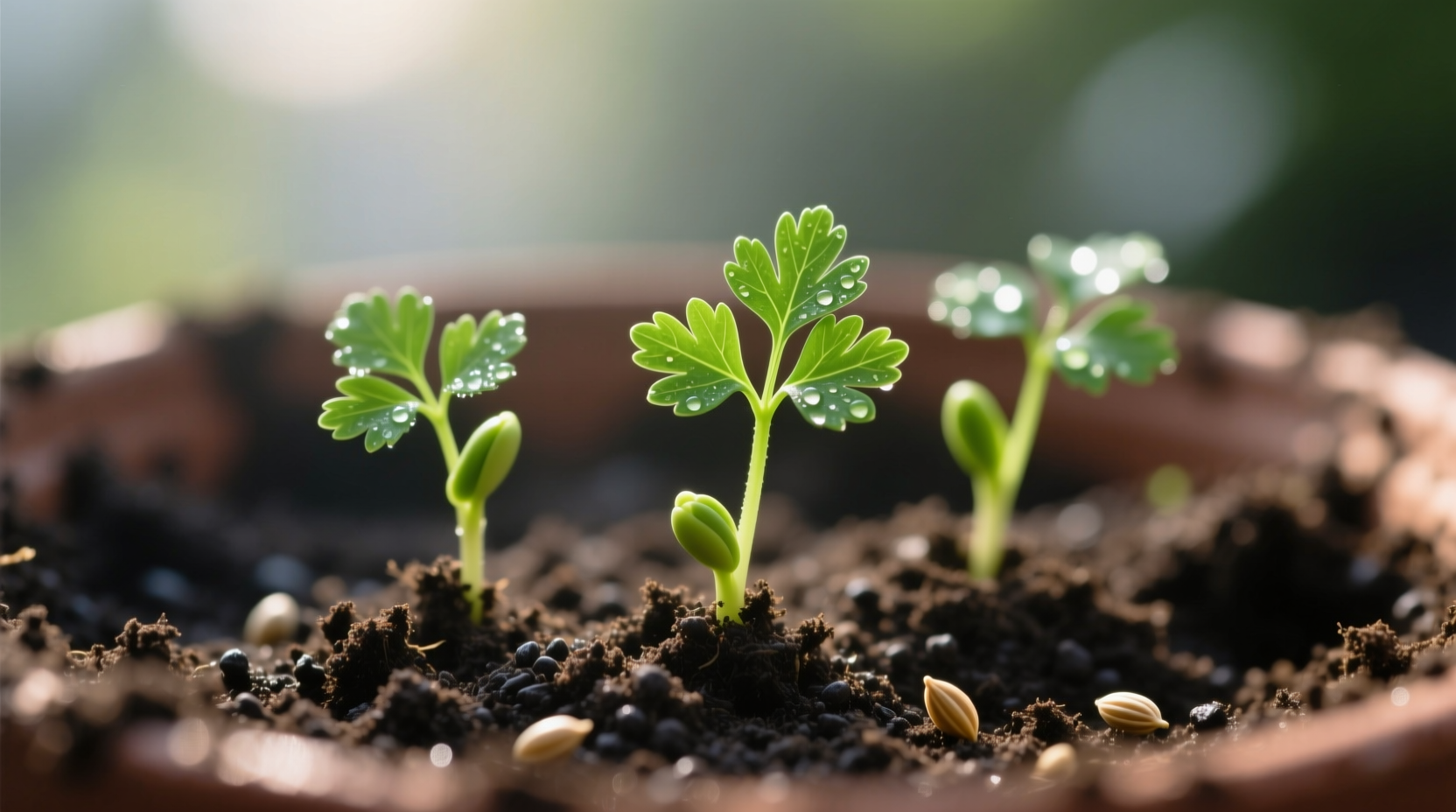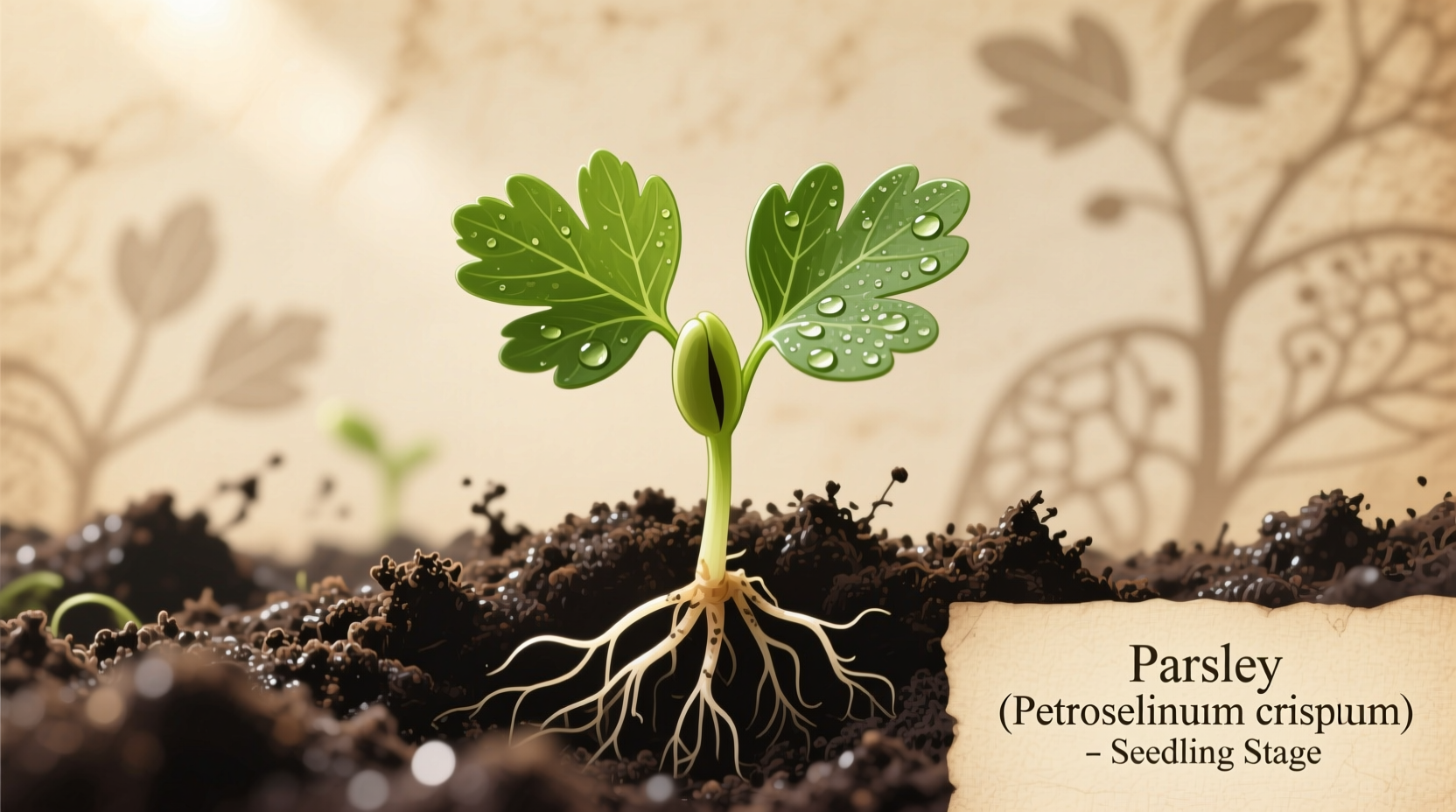What Your Parsley Seedlings Need to Thrive
If you've recently planted parsley seeds and are wondering when you'll see signs of life, you're not alone. Many gardeners become concerned when their parsley seedlings don't appear as quickly as other herbs. Unlike faster-germinating herbs, parsley has a reputation for slow emergence—but understanding what to expect can prevent unnecessary replanting.Identifying True Parsley Seedlings
Many beginners mistake parsley seedlings for weeds due to their slow emergence and delicate appearance. The first signs of growth are two small, rounded cotyledon leaves that look nothing like mature parsley. These give way to the first true leaves approximately 7-10 days later, which display parsley's characteristic feathered appearance.

Germination Timeline: What to Expect Day-by-Day
Understanding parsley's germination process helps set realistic expectations. Unlike many garden herbs that sprout within a week, parsley requires patience:
| Time After Planting | What's Happening Underground | Visible Signs Above Soil |
|---|---|---|
| Days 1-7 | Seed absorbs water, metabolic processes activate | No visible growth |
| Days 8-14 | Root development begins, shoot emerges | Soil may crack slightly |
| Days 15-21 | Shoot pushes through soil surface | First cotyledon leaves appear |
| Days 22-28 | True leaf development begins | Distinctive parsley fronds visible |
This extended germination period explains why many gardeners mistakenly believe their seeds haven't taken. According to research from the University of Minnesota Extension, parsley's slow start stems from its natural defense mechanisms that prevent premature sprouting in unfavorable conditions.
Avoiding Common Seedling Confusion
One of the most frequent challenges new gardeners face is distinguishing young parsley from common weeds. The following comparison helps identify true parsley seedlings:
| Plant Type | First Leaves Appearance | Stem Characteristics | Growth Pattern |
|---|---|---|---|
| Parsley Seedling | Rounded cotyledons followed by feathered true leaves | Thin, delicate, light green | Single central stem with symmetrical leaf pairs |
| Chickweed | Oval leaves in opposite pairs | Thicker, more robust | Spreading, mat-like growth |
| Cress | Similar rounded cotyledons | More rigid, darker green | Clusters with multiple stems |
Optimal Growing Conditions for Seedling Success
Parsley seedlings thrive within specific environmental parameters. Temperature plays a crucial role in germination speed and seedling health. Research from the University of Wisconsin Horticulture Department shows that parsley germination rates dramatically improve within the 65-75°F (18-24°C) range.
Below 50°F (10°C), germination becomes significantly delayed, while temperatures above 85°F (29°C) can inhibit sprouting altogether. This temperature sensitivity explains why spring and fall planting typically yields better results than summer sowing in warmer climates.
Essential Care Practices for Young Seedlings
Proper watering technique makes or breaks parsley seedling development. Many beginners either underwater or overwater their young plants. The ideal approach:
- Maintain consistently moist (not soggy) soil during germination
- Use a spray bottle for gentle watering to avoid displacing seeds
- Once seedlings emerge, water when top inch of soil feels dry
- Avoid overhead watering which can damage delicate stems
Light requirements change as seedlings develop. During the first two weeks after emergence, provide 6 hours of indirect sunlight. After the third week, gradually increase exposure to 8 hours of direct sun. For indoor seedlings, position under grow lights 2-3 inches above the plants for 12-14 hours daily.
Troubleshooting Common Seedling Problems
When parsley seedlings struggle, these issues typically cause the problems:
Leggy, Weak Growth
Insufficient light causes seedlings to stretch toward light sources. Solution: Increase light exposure gradually or move plants closer to light source. If growing indoors, ensure grow lights are positioned correctly.
Yellowing Leaves
Often indicates overwatering or nutrient deficiency. Check soil moisture before watering and consider a balanced liquid fertilizer at half strength after seedlings develop their second set of true leaves.
No Emergence After 28 Days
Parsley seeds have relatively short viability. If no growth appears after 28 days, the seeds may be too old. The Royal Horticultural Society recommends using parsley seeds within one year of purchase for best germination rates.
Transitioning to Mature Plants
When your parsley seedlings reach 2-3 inches tall with 4-6 true leaves, they're ready for the next growth phase. Begin hardening off outdoor plants by gradually exposing them to direct sun and wind over 7-10 days. For container plants, transplant to larger pots with adequate drainage.
At this stage, your care routine should shift from delicate seedling maintenance to supporting robust growth. Increase watering frequency as plants mature, and begin regular harvesting to encourage bushier growth. Remember that parsley is a biennial plant—most gardeners grow it as an annual for optimal flavor and leaf production.











 浙公网安备
33010002000092号
浙公网安备
33010002000092号 浙B2-20120091-4
浙B2-20120091-4